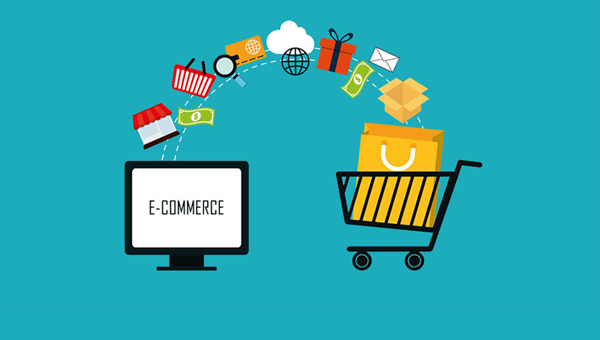Most specialists rely on virtual reality and augmented reality, changing the dynamics of shopping. Enterprises have recognized this trend and aim to take advantage of the developing technology in order to provide personalized customer experience, accelerate services and eradicate factors that cause hindrance. Whilst forming an eCommerce application, you need to keep in mind the technological advancement and the trends within the industry that keep users engaged for longer periods of time.
In the meantime, it is essential to pay attention to functionality, accessibility, performance, usability, and safety of the online store. These factors are going to put an impact on how effectively audiences are involved and contribute to purchases.
7 Elements to keep in mind for an eCommerce application
1. Smartphone shopping:
Shoppers these days have the option to access eCommerce sites on their smartphones. And applications provide an additional feature to the users, offering them functionalities which enhances their shopping experience. In short, it is important to aim towards an application that influences an increase in conversion rates. Whilst planning your strategy, keep in mind the variety of devices and platforms based on different user conditions. Another thing to ensure is that your application caters to a personalized experience that allows the user to utilize different methods according to their needs and requirements. Web stores require optimization for devices to generate greater amounts of revenue.
2. Real-time shopping:
For each customer, shopping experiences vary. However, eCommerce applications are required to deliver an experience that boosts conversion rates. You can opt to personalize shopping for certain targeted customers based on their geographic location, preferences, brand interactions and previous purchases. Having a customer persona is going to assist you at transporting relevant content, recommendations and offers as search results. Using analytics to one’s own benefit in order to identify expectations and requirements for each customer, leading to a successful persuasion into purchasing products. Make sure to integrate tools that are used for analytics to obtain actionable customer data and information that can be used for your eCommerce application.
3. Assistance for virtual shopping:
People often reach out to web stores to save their time and effort. However, most shoppers miss out on experiences such as interacting with sales executives. There are ways to improve familiarities by deploying virtual assistants, for example, a chatbot that responds to queries and comments given by customers. This will allow users to feel like they are associating with a real sales executive, helping them make a decision and gain information. As useful as this is, you will still be needed to deploy actual sales staff to look after complex concerns raised by the consumers.
4. Multiple payment methods:
Since eCommerce websites can be accessed through different devices, customers prefer to pay through their mobile wallets. However, each customer is going to pick different payment solutions, whether its internet banking, debit and a credit card or Paypal. The eCommerce application must be able to facilitate through different payment options to reduce the chances of shopping cart desertion. As Android mobile app developers, you must integrate payment processing systems into your application, one that supports conventional and non-conventional payment methods.
5. Securing customer data:
Web stores are vulnerable to security attacks; similarly, data breaches have grown recently and that dissuades consumers to share their personal information on online platforms. A massive percentage of shoppers have been found to leave shopping carts during moments where they don’t feel secure regarding payment processes and security policies concerning personal data. In addition to that, allowing shoppers to pick from different payment methods, you will be required to make them feel safe to persuade them to go through checkout procedures. It is crucial to incorporate robust security features within eCommerce applications and make use of security-related emblems on checkout processes to help them associate with your service comfortably.
6. Persistent testing:
You need to keep in mind to deliver an eCommerce application that is evergreen. Accessibility, performance, functionality, security, and usability has a direct link with customer experience. Testing your eCommerce application with the help of devices and platforms followed by networks and user conditions is going to help you evaluate the position of your app allowing you to highlight factors that are beneficial for you and those that require alteration. Not just that, it is also going to assess user experience based on features you have implemented and their influence on the customers. This is exactly why it’s important to perform tests to mark deficiencies and performance bottlenecks hindering the user’s experience. You will also require a robust software that examines frameworks. You will also need tools that assess software efficiently.
7. Social factors integration:
It is a known fact that people tend to spend more time on social media than on any other platforms such as websites and applications. Most shoppers use social media to gain information in the form of feedback and research that is for products they wish to buy. Comments and reviews on social media by customers who have already bought those products, often assist as recommendations for viewers. To enable these functionalities you will be required to integrate social media factors on different pages. You should encourage customers to post their reviews on social media with the help of comments and ratings, allowing others to gain knowledge on the product. This is going to help your customers in making a decision and aid you at accomplishing an increase in conversion rates.
In order to keep the users engaged and stay top of the mind, it is better to communicate with them in their native language. Thus, if you are running an online store in different regions, make sure you translate and localize your content with the help of professional translation services. In this way, you will be able to communicate with the audience in a better and effective manner.
It is still important to keep in mind that trends in eCommerce applications grow with time. Therefore, current and emerging trends are both important for the application. At the same time, you should ascertain factors that make an impact on customer experience. Make sure to focus on aspects related to the software development lifecycle to deliver personalized and real-time customer experiences.
Here is another category which is introduced by A class Blogs. Category name is Write for us tech for guest blogs.


